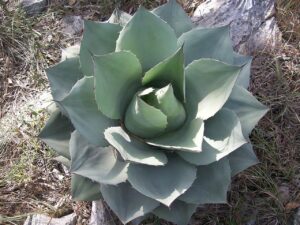
The botanists of the Fort Worth Botanic Garden stand in a long line of scientists who study the plants of Texas. A new exhibit at the BRIT Library, “Voyages of Discovery: Trailblazing Texas Botanists,” tells the story of these pioneering naturalists and their contributions to science.
“Texas experienced its golden age of discovery in the 1800s when European and American scientists first explored the state,” says BRIT Librarian Ana Niño. “We’re telling their stories along with the stories of important Texas botanists from the 20th century.”
The exhibit includes portraits of important figures, herbarium specimens collected by these researchers and other archival materials from both BRIT collections and institutions including UC Berkeley and the Smithsonian Institution.
Niño emphasizes that the exhibit focuses on pioneers in the scientific study of plants. “Native people who lived in what would become Texas had a deep understanding of plants,” says Niño. “The scientists we’re featuring were the first to study plants through the lens of western science.”
Voyages of Discovery:
Trailblazing Texas Botanists
Through January 12,
8 a.m. – 5 p.m.
Among those featured in the exhibit is Jean Louis Berlandier (ca. 1805- 1851), a French naturalist who joined the Mexican Boundary Commission, a military and scientific expedition established by Mexico in 1827. The expedition traveled from the Rio Grande valley as far northeast as Nacogdoches. Berlandier collected a total of 55,077 specimens including 198 packets of seeds, 935 insects, 72 birds, 55 jars of material in alcohol, 700 specimens of land and freshwater mollusks, and 188 packets of dried plants.
Another pioneering botanist featured is Thomas Drummond (1793-1835). Born in Scotland, he traveled widely collecting plant samples, exploring the Arctic, the Rocky Mountains and Texas. On an expedition began in 1831, Drummond collected the first specimen of bluebonnet introduced to the scientific world; the specimen was described in 1836 by Sir William Hooker of Kew Gardens in London.
The Library exhibit was planned to coincide with an exhibit on display at the Amon Carter Museum of American Art, “Trespassers: James Prosek and the Texas Prairie.” Contemporary artist, writer and naturalist Prosek spent two years exploring grassland habitats in Texas and documenting the rich plant and wildlife diversity of these spaces.
“Prosek is interested in how we have this need to enclose, name and classify nature,” says Niño. “While we gain enormous insights from this process, it is only one way of many to understand the natural world. Prosek is interested in what is gained and what is lost in that approach.”
The Library exhibit considers the first scientists to take view the plants of Texas through this lens.
“Voyages of Discovery: Trailblazing Texas Botanists” will be on display in the in the Upper Atrium Exhibitions Gallery through January 12.







